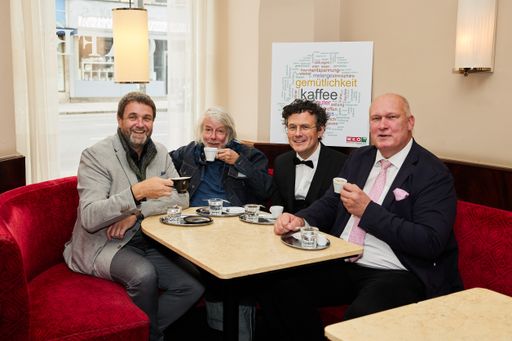The first Viennese coffee house was founded in the 17th century and since then the establishments have been an integral part of Vienna’s past and present. The “Viennese coffee house culture”, which was declared a World Heritage Site in 2011, is characterized by its very special atmosphere, by the cosiness and, last but not least, by the reputation of the Viennese as an “extended living room”. But is that still the case? The coffee house specialist group investigated this question together with SME Research Austria. The result is the 2024 coffee house study.
The reputation of the coffee house is still true today
And the coffee house has not lost its reputation for coziness to this day: for 70 percent of the Viennese aged 17 and over surveyed in the study, “spending time with friends or family” is one of the reasons for visiting a coffee house, and 61 percent simply want a coffee – or another hot drink – and for 38 percent, a visit to the coffee house serves to relax. “I think a hundred years ago this question would have had very similar answers. “The basic function of the coffee house has not changed,” says Wolfgang Binder, chairman of the coffee house specialist group in the Vienna Chamber of Commerce.
The question about the frequency of coffee house visits also shows how important their cafés are to the Viennese. “A third of the population – more than half a million – go to the coffee house at least once a week, another quarter several times a month. So we see that the coffee house is still “the second living room” of the Viennese,” says Binder. By the way: Two percent of the population aged 17 and over go to the coffee house every day. “That’s more than 32,000 coffee house visits every day. On average, our approximately 2,000 coffee houses each have 16 regular guests who come every single day,” says Binder happily. 39 percent of those surveyed stated that they primarily go to their favorite café. People over 65 tend to do so even more.
The cost of visiting the coffeehouse
The classic Viennese coffee houseーCoffee is probably the melange, it regularly tops the sales statistics. This means that the price is also in focus, although on average it is drunk cheaper than often thought: the price for the Viennese Melange ranges between 3 and 3.99 euros for 54 percent of those surveyed, 29 percent give a slightly higher price ( 4 to 4.99 Ꞓ). The melange is cheaper (€2 to 2.99) in 13 percent of cases.
Cake also goes with coffee. That’s how it is when you look at the most popular dishes in the coffee house: cakes and tarts are on the menu for 57 percent, breakfast in all its variations is on the menu for 42 percent. This is followed by snacks (41 percent) and lunch for almost a third (30 percent).
In the end, the expenses for an average coffee house visit add up to less than ten euros for almost 30 percent, and a further 43 percent of guests spend less than 15 euros. “Of course these are the ones who don’t come to eat. But you can see that coffee and cake are running out,” says Binder, who emphasizes the Viennese’s willingness to tip: “Half of the guests tip at least 10 percent, and hardly anyone who generally leaves out a tip.”
“What the guest cannot do, the restaurant can do”
The new image campaign of the coffee house specialist group is also intended to show the functions of the coffee house for the Viennese. Together with the marketing expert Thomas Kratky, the new spot “What the guest can’t do, the restaurant can do” was created with Manuel Rubey, who follows in Peter Alexander’s footsteps as a singing waiter. “The Viennese coffee houses are a very special brand. A love brand, as we say. With everything that goes with it. You may be able to complain about them, but you can’t not love them! They are a second home, a place of retreat, and at the same time the avant-garde for new things and a place of permanent memory,” says Kratky about his intention for the campaign. The video can be viewed at wko.at/wien/gastwirtschaft
